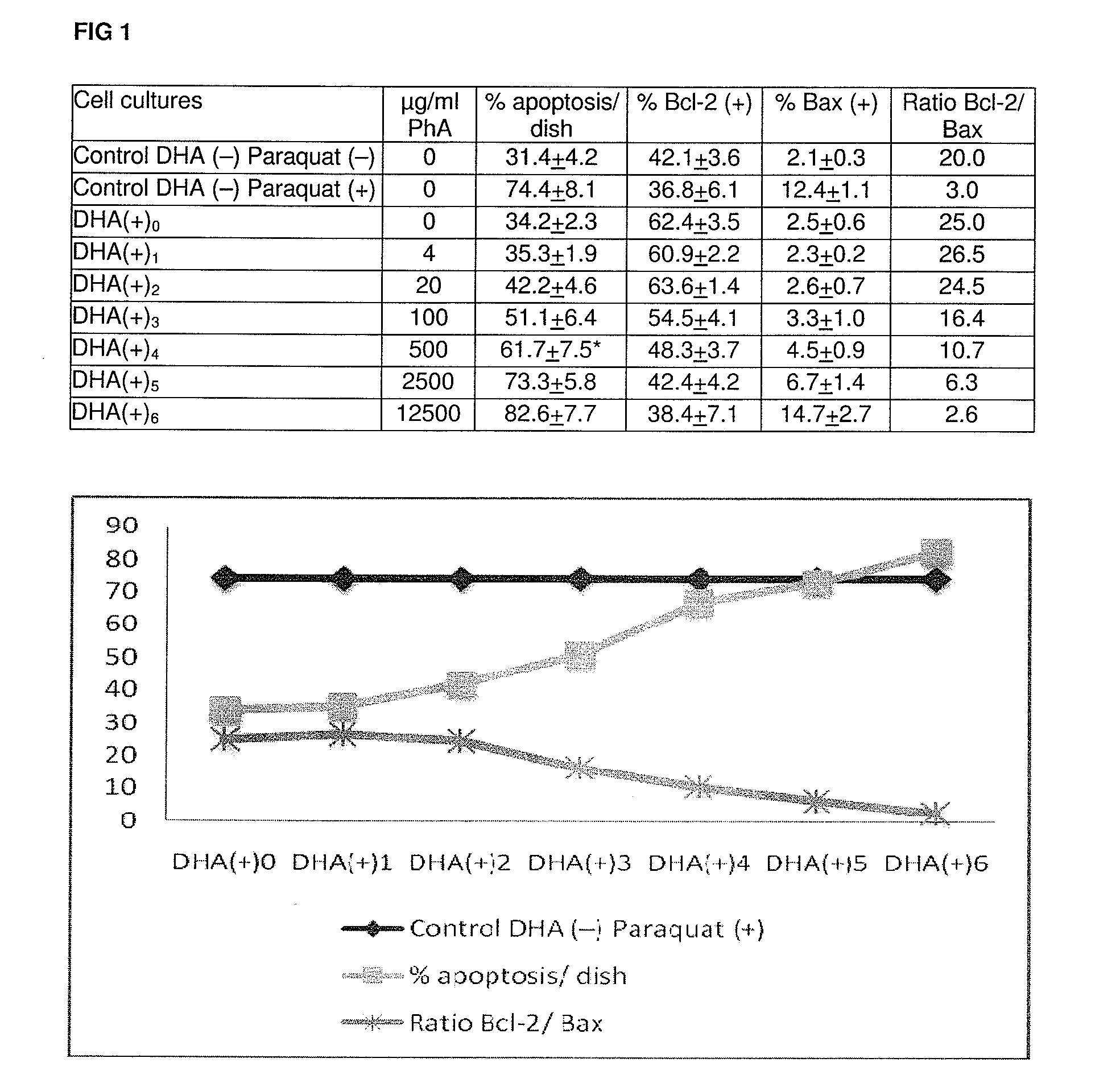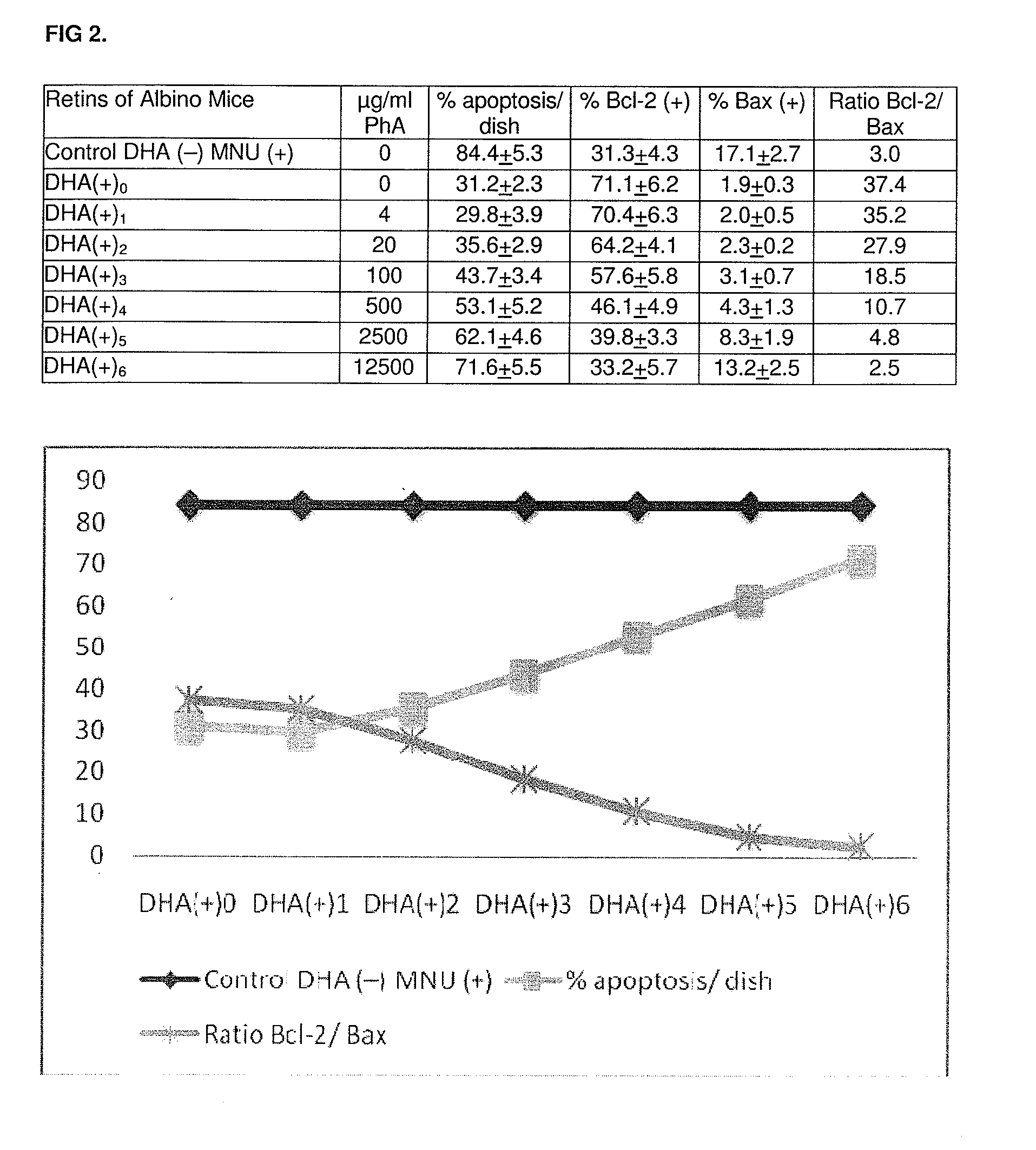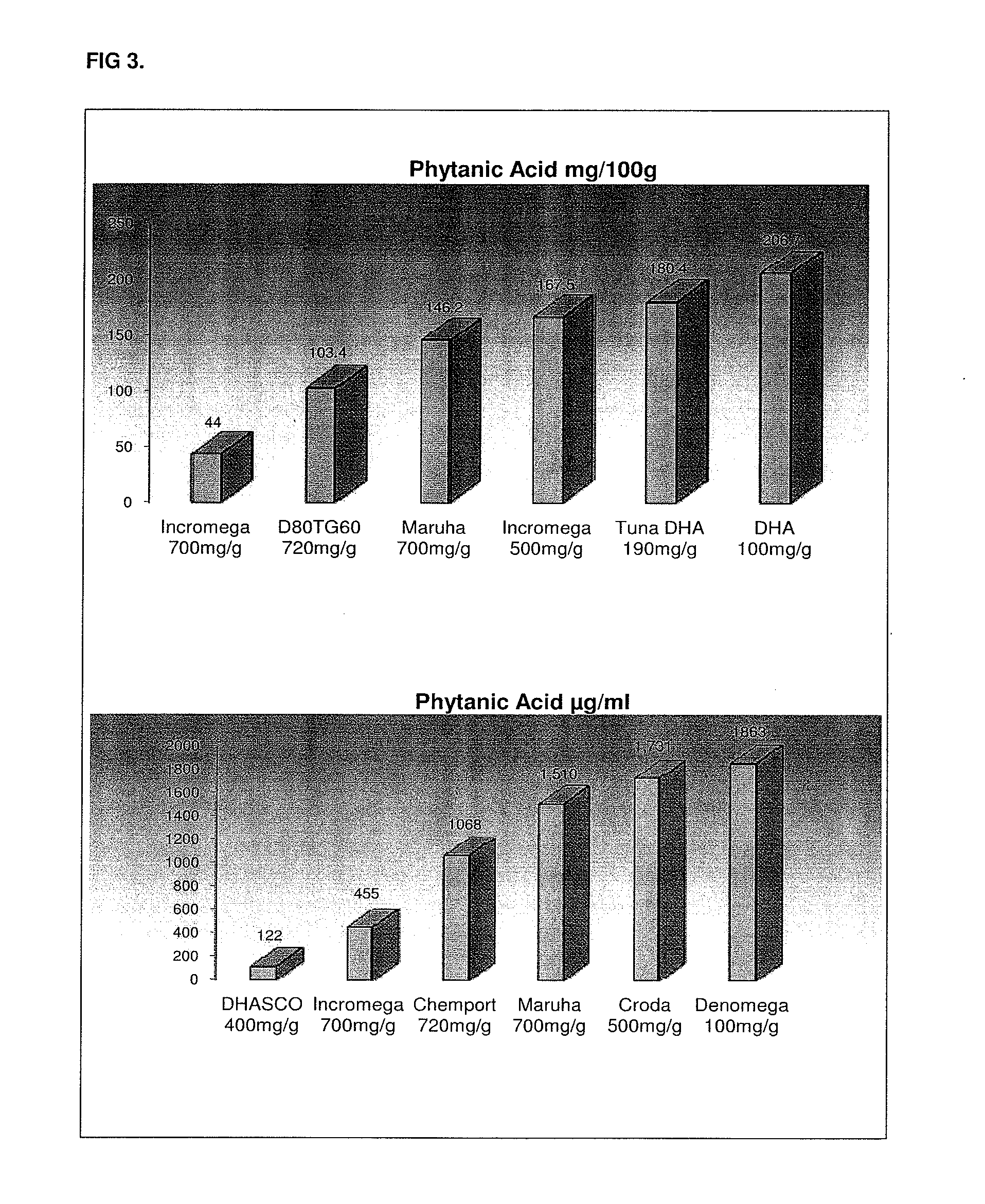Compositions rich in omega-3 fatty acids with a low content in phytanic acid
- Summary
- Abstract
- Description
- Claims
- Application Information
AI Technical Summary
Benefits of technology
Problems solved by technology
Method used
Image
Examples
example 1
Procedure to Obtain an Extract Containing Triglycerides with DHA >700 mg / g and PhA <5 μg / g, by Isopycnic Ultracentrifugation and Crystallization
[0226]The raw material used is non-deodorised and non-purified raw tuna oil (Sanco) containing DHA (210 mg / g), EPA (67 mg / g) and total omega-3 (285 mg / g). After quantifying fatty acids in oil through gas chromatography and mass spectrometrometry, PhA presence was determined (1.3 mg / g). Two decreasing temperature cycles are established for their effectiveness and in order to quickly achieve the main purpose of this innovation of DHA without PhA.
[0227]1. Saponification
[0228]In a 5-litre reactor with a shaker we proceeded to saponificate 1000 gr of raw tuna oil with 250 g of KOH, 280 ml of water and 10 ml of ethanol to initiate the reaction at a temperature of 40° C. under an inert atmosphere (nitrogen) shaking the mixture at 300 rpm for 1 hour.
[0229]2. Acidification Formation of Free Fatty Acids from Their Salts
[0230]To the potassium mixture o...
example 2
Continuous Procedure in Order to Obtain DHA ≧700 mg / g and PhA <90 μg / g
[0244]For this example, refined red fish (Sebastes sp.) oil was used as a starting raw material. (LYSI) with an omega-3 content of 315 mg / g, of which 110 mg / g are DHA and 165 mg / g EPA, and 1.9 g / kg PhA.
[0245]1. Saponification and 2. Acidification
[0246]We proceeded to the saponification and acidification of 1000 gr of red fish following the same proportions and procedure used during the example 1.
[0247]From the acidified oil two things can be done. The purified oil is divided in two identical portions for PhA separation and purification of omega-3 fatty acids, using one portion for the following step:
[0248]a) Isopycnic ultracentrifugation and crystallization
[0249]1. Isopycnic centrifugation
[0250]We centrifuge 500 g of acidified oil at 150 rpm for 20 minutes forming a solid phase or stearine (274 gr.), vacuuming the supernatant liquid containing the free fatty acids to be used next on a glycerol gradient as indicate...
example 3
[0266]In order to determine the total amounts of fatty acids we have performed the following analysis:
i) Analysis of the fatty acids by gas chromatography—mass spectrophotometry (GS-MS):
Reagents: ethanol 96%, petroleum ether, hexane, methanol, 0.8 mol / L KOH (Sigma-aldrich).
Instrument: Agilent HP 6890 Series GC SYSTEM—5793 Mass selective detector; HP Analytical CD-ROM MS Chemstation Libraries Version A.00.00.
Procedure: 50 mg of fatty acids inside a 10 ml test tube were mixed and shaken in an ether and hexane mixture (2:1), 5 ml of methanol, and 1 ml 0.8 mol / L KOH. We added water and centrifuged at 3000 rpm for 10 minutes. The supernatant was dismissed and the analysis by GC / MS is carried out.
GC / MS: Chromatographic column HP-1.17 m×200 μm×0.11 μm. Injector temperature: 280° C.; interphase temperature: 290° C.; speed: 5° C. / min from 100° C. to 260° C.; helium column with flow of 0.9 ml / min; sample from the injector: 1 μl; ionizing source temperature: 230° C.; electrode ...
PUM
| Property | Measurement | Unit |
|---|---|---|
| Temperature | aaaaa | aaaaa |
| Temperature | aaaaa | aaaaa |
| Temperature | aaaaa | aaaaa |
Abstract
Description
Claims
Application Information
 Login to View More
Login to View More - R&D
- Intellectual Property
- Life Sciences
- Materials
- Tech Scout
- Unparalleled Data Quality
- Higher Quality Content
- 60% Fewer Hallucinations
Browse by: Latest US Patents, China's latest patents, Technical Efficacy Thesaurus, Application Domain, Technology Topic, Popular Technical Reports.
© 2025 PatSnap. All rights reserved.Legal|Privacy policy|Modern Slavery Act Transparency Statement|Sitemap|About US| Contact US: help@patsnap.com



